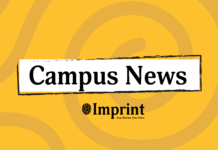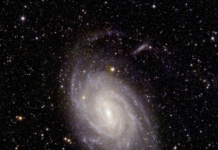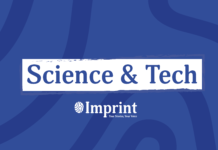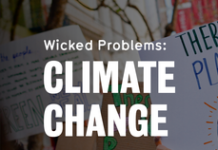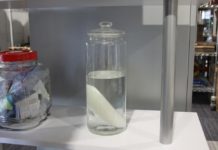The results are in: 25.13 per cent of students (8,876) voted in WUSA’s election, the highest percentage since 1985, and the highest number ever. This surpassed last years’ results exponentially — 2023 saw a historically low 3.28 per cent voter turnout. From a statistical view, it appears WUSA significantly improved student motivation to engage with the organization — and in many ways, they did. However, I believe WUSA should view these results not as a sign of positive engagement and approval, but rather as a call to action. Instead of being concerned with the effects high voter turnout has on its brand imaging, they must accept it with a sense of humility. This voter turnout can be partly attributed to dissatisfaction and material rewards —- factors that not only distorted the results, but are also unsustainable in improving year-round student engagement. These are not the pillars upon which a strong student union relies.
For context, this burst in democratic participation is so drastic that WUSA surpassed even the University of Western Ontario (UWO), a university traditionally regarded as a leader in student engagement, after the turnout for their University Student Council election this year fell from 35 per cent in 2023 to 21.6 per cent in 2024. In the recent history of UWO’s elections, there are relatively large swings in student participation, but nowhere near the fantastically steep slope created when representing WUSA’s turnout history on a line graph.
2024 broke a 16-year average by more than 15 per cent. I believe there are five key factors that explain this phenomenon.
The first is simple — choice. Real choice between presidential and director candidates gave stake and purpose to the election, something that has been lacking over the past four years. Candidates tend to have less motivation to campaign seriously when running unopposed. Since the pandemic, elections have been a tedious “approve or disapprove” ballot for the sole candidate running, forcing students into an unattractive binary of electing an untested candidate or nobody. More candidates running also increased the election’s word-of-mouth reach, as friends, classmates, and associated club members came out in support. Former WUSA President Rory Norris said that the competitiveness “ensured that multiple candidates were out throughout the election season connecting with individual voters and groups which then further spread the election message and encouraged more people to vote.”
The election was also significantly impacted by the existence of parties. When I interviewed Arya Razmjoo, Waterloo United’s presidential candidate, in November, he mentioned he was assembling a team of director candidates running on a unified platform. At that moment, I knew that this would be the most competitive election of my university experience, because parties bring legitimacy to political messages. Being a team of several members, parties make it more feasible to achieve large-scale goals that are much less practical for a single individual negotiating with other independents. The ambitions of Renew and United seemed more practical to voters given the existence of a whole team to implement them.
Thirdly, I tip my cap to the marketing staff at WUSA who made election paraphernalia much more visible than in previous years. Stickers, posters, online interviews, a giant banner in the middle of SLC Great Hall, messages from professors on LEARN and Meet the Candidate booths all made the existence of a competitive election much more known across campus. Though I contend that WUSA should (and must, as per their Elections and Referenda procedure 11.4) bring back physical voting booths on election days, I admit that they were able to get students onto “vote.wusa.ca” effectively using sophisticated marketing techniques.
However effective the marketing team was, WUSA cannot ignore that heightened political dissatisfaction was a contributing factor. Controversies ranging from internal discontent, to responses to external geopolitical events, forced many students to become aware of WUSA and the power of those in control of the organization. The creation of WUSA Reform last fall directly reflected such heightened awareness, and so did the bold promises of the running parties. Razmjoo, for example, campaigned on conducting an internal investigation into WUSA that would seek to identify “gaps in corporate functions,” evidenced by “delayed reimbursements, sluggish inquiry responses, and a concerning lack of transparency with the student body.” Independent presidential candidate Rafaeel Rehman said during the Imprint officer debate, in relation to WUSA deleting an Instagram post made by RAISE in support of Palestinian liberation, that he wished to allow these services to operate with greater autonomy and condemned censorship from upper management. Nicholas Pfieffle, president-elect for Renew, said that he fought against the installment of WUSA’s new governance model, and his party openly campaigned on readjusting it.
WUSA mustn’t lose the forest for the trees. The organization cannot view this data as evidence that issues of student engagement and organizational culture have been solved. While this election might seem like a sign of a larger positive trend, it must be recognized that engagement from the candidates themselves was fueled by dissatisfaction — all three presidential candidates critiqued WUSA’s internal structure in some way. The strength of their platforms lay in their bold proclamations of reform, such as Razmjoo’s call to “change the status quo,” and team Renew’s pledge that “students deserve better.” Even if this election’s turnout is seen as a win, it must also be seen as the catalyst for further improvement. Following the election, WUSA wrote on their website that “Your involvement has transformed this election from a routine event into a powerful expression of student voice and democracy on our campus.” If this election is to truly be a “powerful expression,” then it must go beyond the ballot box. The elected candidates must prove that they are actually able to solve issues that students care about, break through the bureaucratic red tape, and truly be leaders on campus. Proving to students that WUSA serves an important function is the most effective way to increase engagement — other than giveaways, of course.
The last key factor contributing to the election’s success was consumer incentives. Leading up to Feb. 12, WUSA announced a MacBook Air giveaway to a randomly selected voter, advertising this raffle with signs across campus and mass emails. Norris said that the giveaway had “quite the effect,” and, I agree — it single-handedly contributed to hundreds of votes from students who pursued a material reward. Adding to the marketing ploy was a Dominos booth in SLC Marketplace “encouraging” students to vote in exchange for free coupons, intentionally positioned to draw students in. As a result of this strategy to increase voter turnout, I argue that a substantial percentage of ballots cast were entirely uninformed, based on random whims, phonetically-pleasing names, and whichever candidate appeared first on the ballot. I bet that some of these individuals knew not of WUSA’s mere existence, much less the election and candidate platforms.
Emma Lee, elected as a director under the Renew Party, responded to a Reddit post about the MacBook giveaway, saying that although it doesn’t address the root causes of student apathy, it could be a gateway to WUSA for students. “While ‘bribery’ to vote isn’t a perfect solution, it doesn’t change the fact that we need some way to combat this,” she wrote. Alex Chabin, a current WUSA director who also won a spot on next year’s board, agreed, writing to Imprint in an email, “From an overarching/long-time perspective, the MacBook promotion was a success in getting students more aware of WUSA.”
WUSA should not emphasize strategies such as a Macbook giveaway in future elections. I believe the candidates did an extremely effective job this year at convincing students that their platforms mattered, that they were addressing real issues, and that they could solve them. At the same time, WUSA marketing did a good job at showcasing them. These factors led to meaningful engagement. All the MacBook did was distort the election results, disregarding merit and platform strength to the whims of randomness and a superficial click. Chabin, acknowledging the negative aspects of the giveaway, wrote “from a candidate’s perspective in the election, the MacBook posed some concerns of voter integrity… Although it may have helped bring around more interest and awareness of the WUSA election, it probably didn’t encourage careful consideration when it came to casting ballots.”
WUSA should be humble about these election results — although they reveal a real improvement in WUSA’s ability to organize engaging elections, it does not correlate with the student body’s engagement, nor approval towards them. Going forward, I recommend that WUSA bring back in-person voting booths, encourage students to attend board of directors sessions, expand the digital media presence of candidates and current directors, and, although he will not be in power, carry out Razmjoo’s plan of launching an internal investigation. I also believe WUSA should continue showcasing candidates and current directors at the SLC marketplace, and holding roundtables open to all undergraduate students. No doubt, it will take some creativity and passion, but these actions will lead to genuine engagement and trust in WUSA, more so than any giveaway program. For now, this election should be viewed as a single, blossoming tree in a larger forest ravaged by wildfire.
With files from Alicia Wang.



